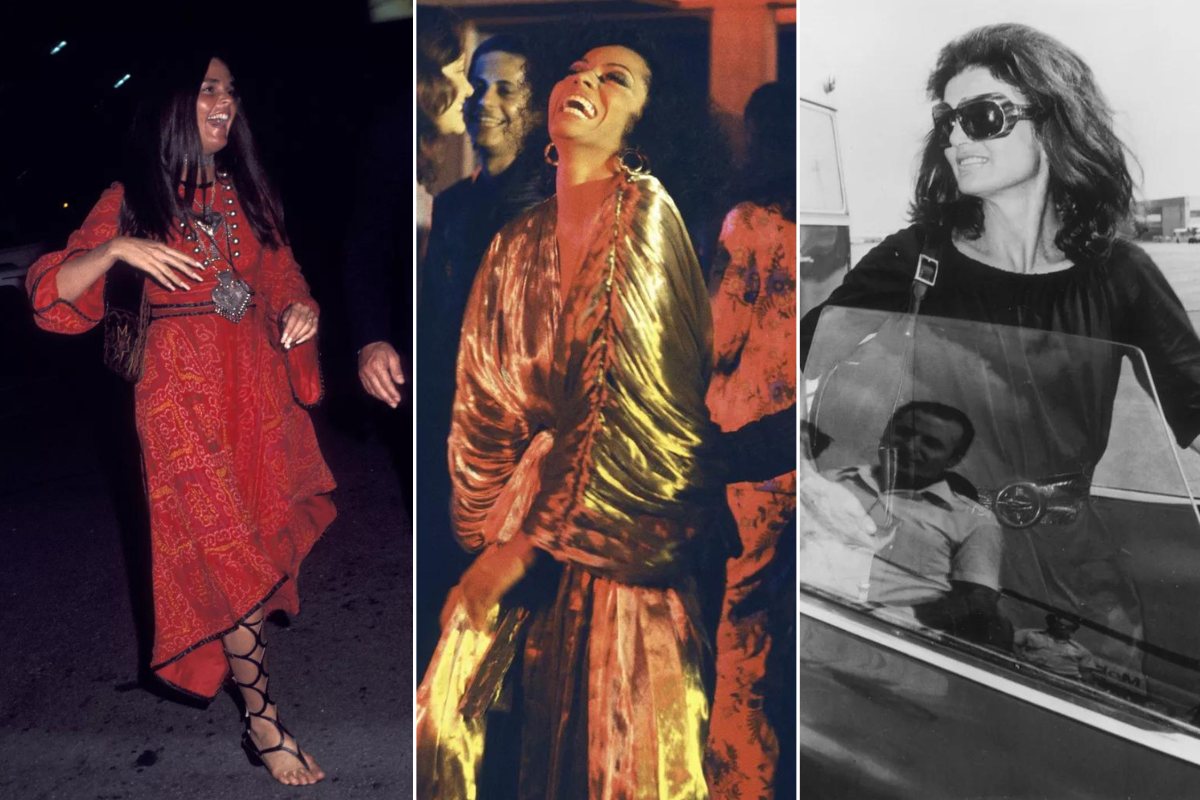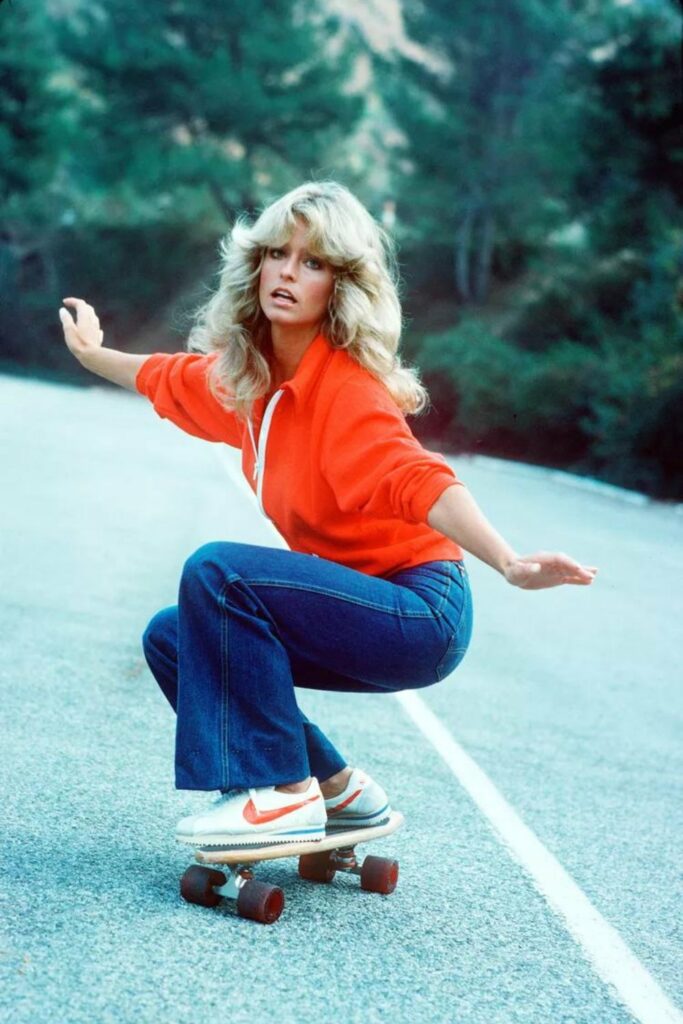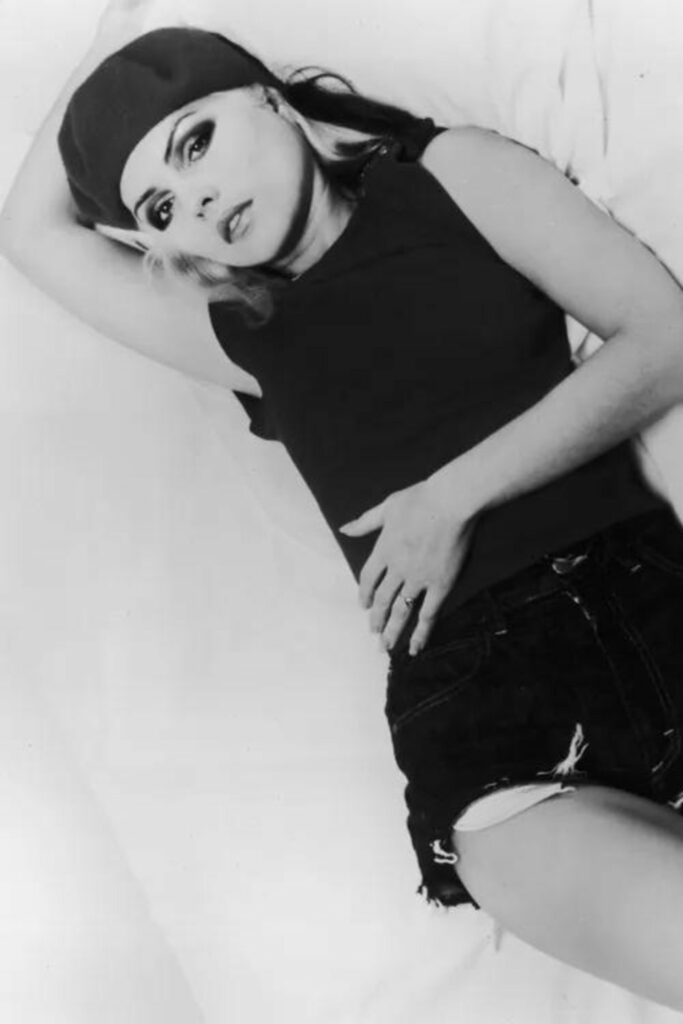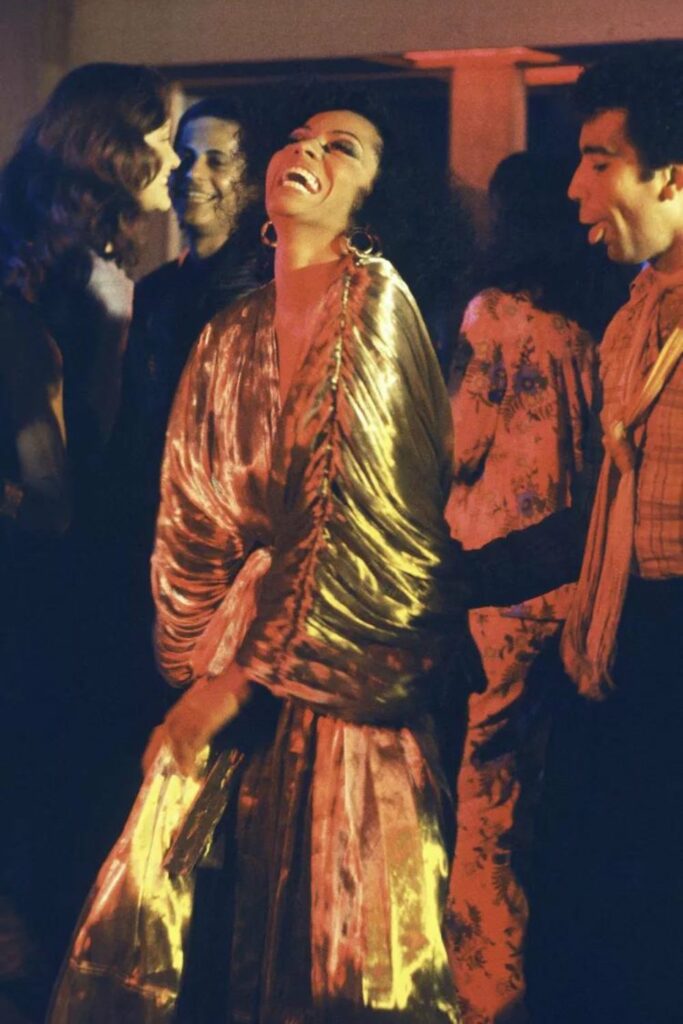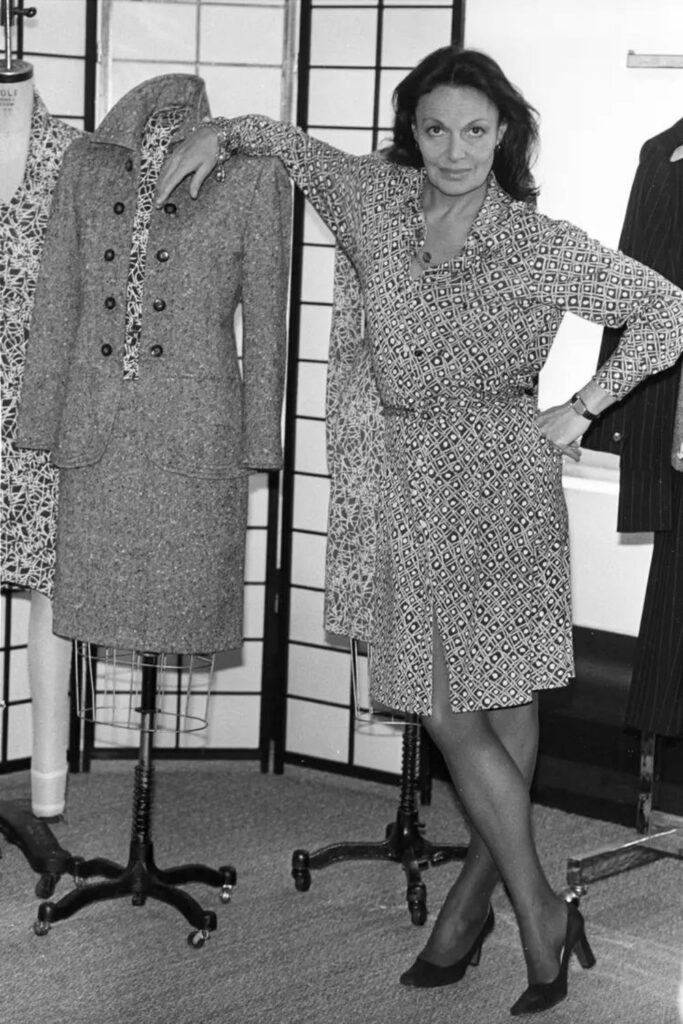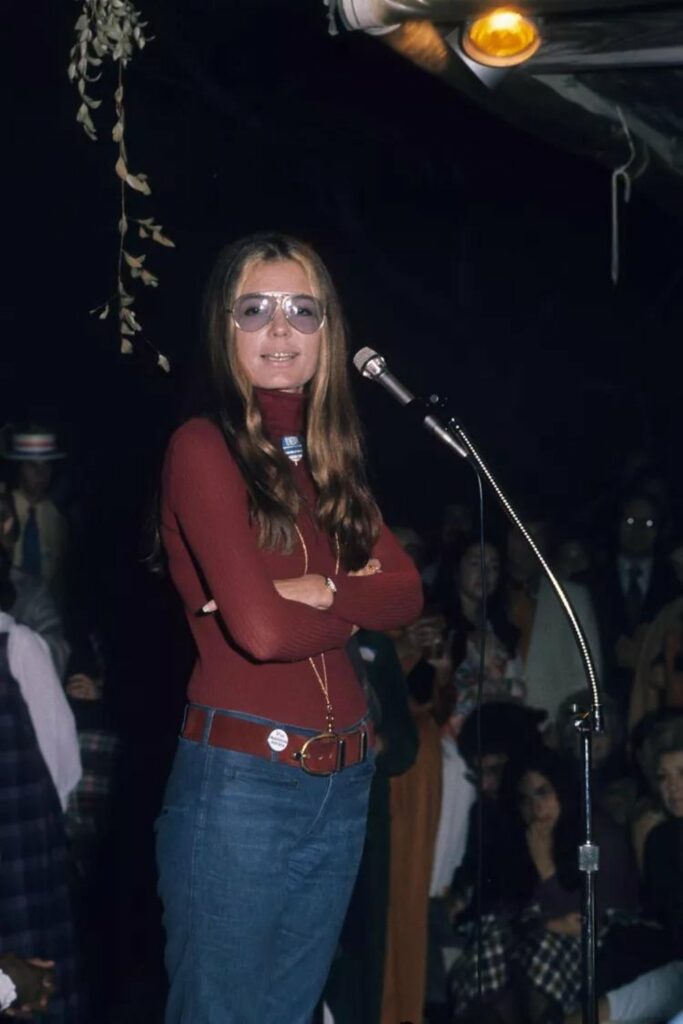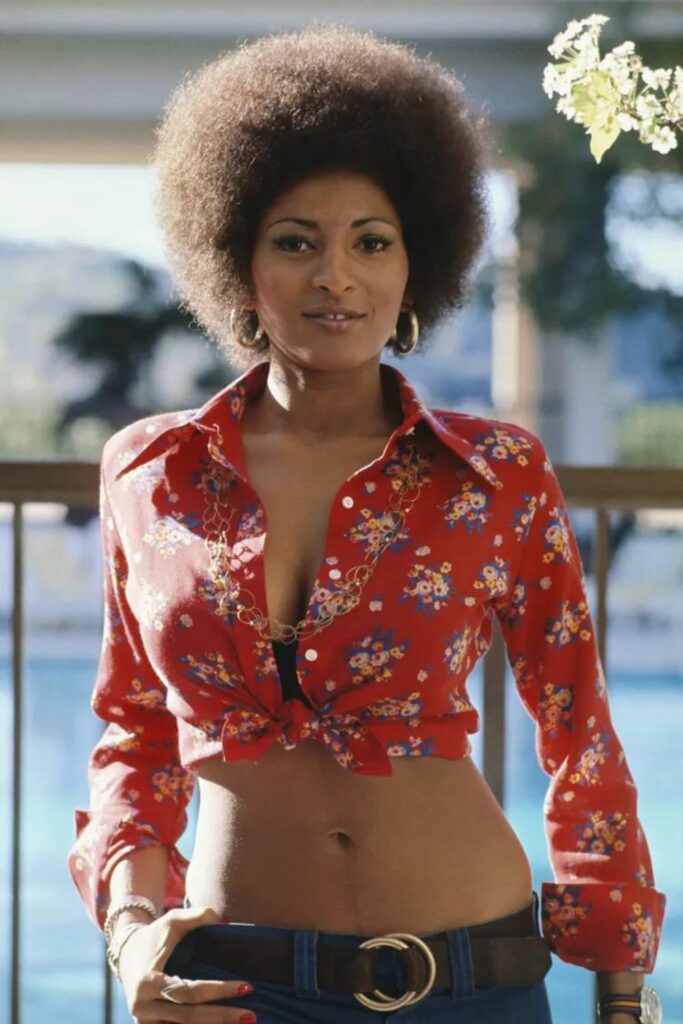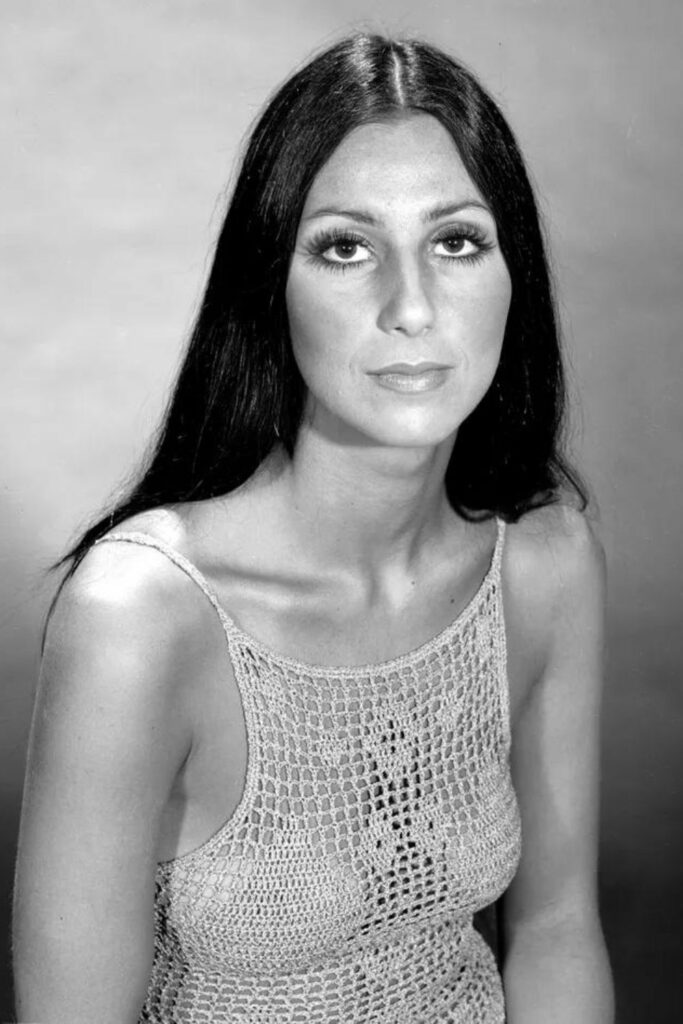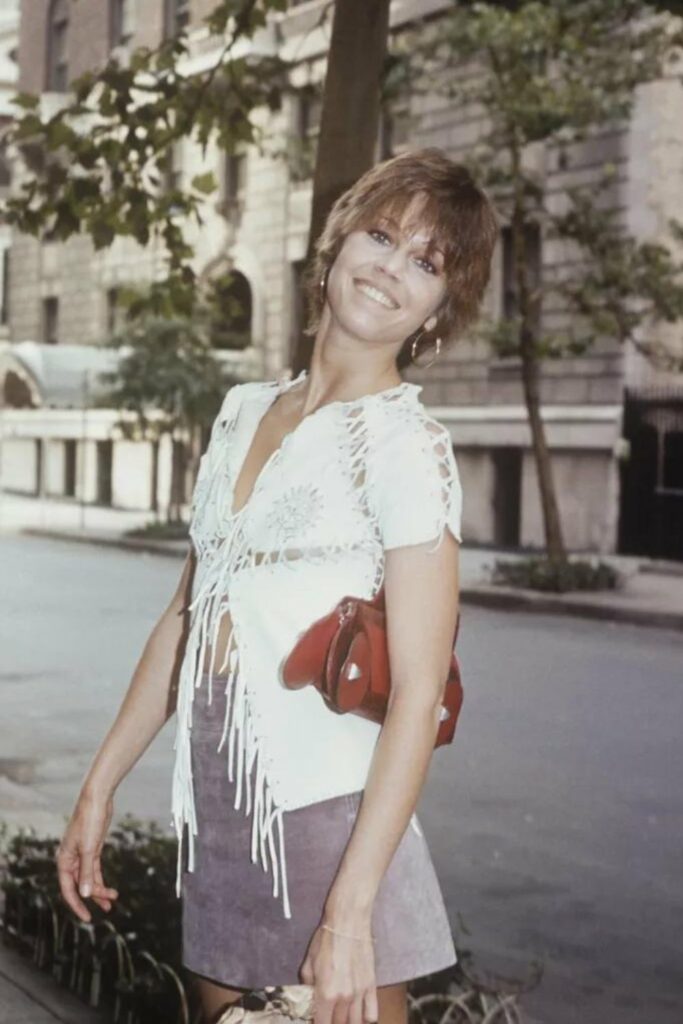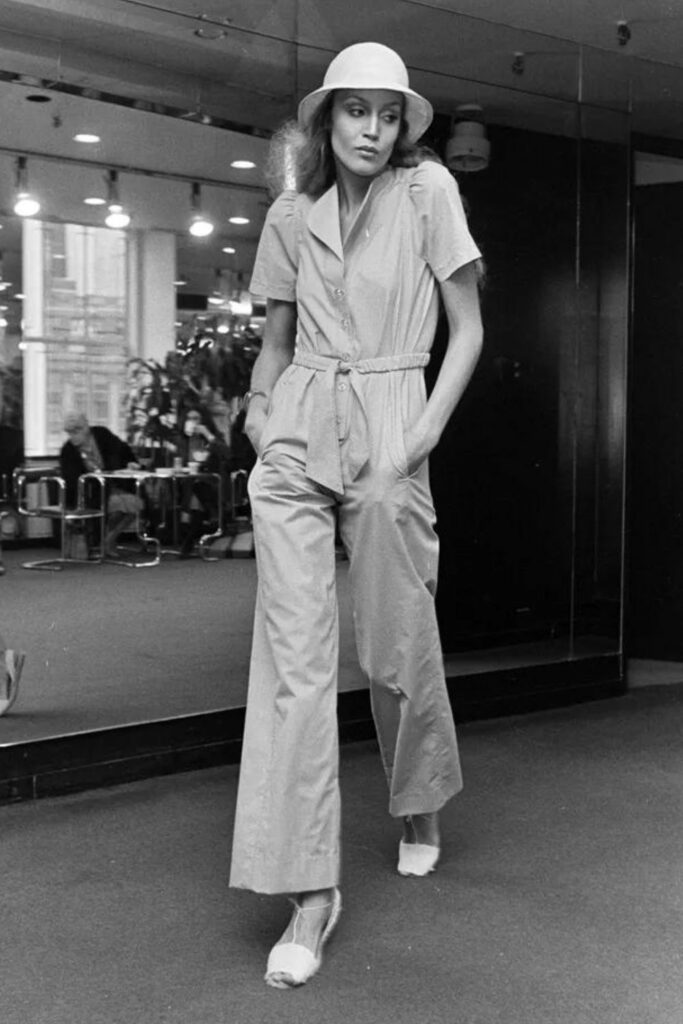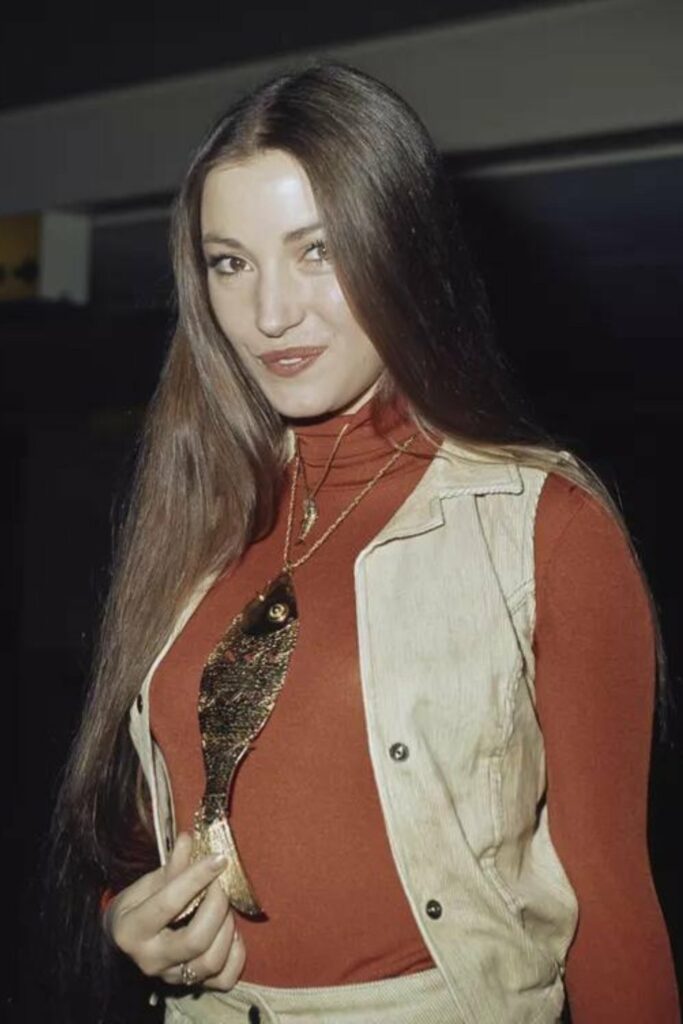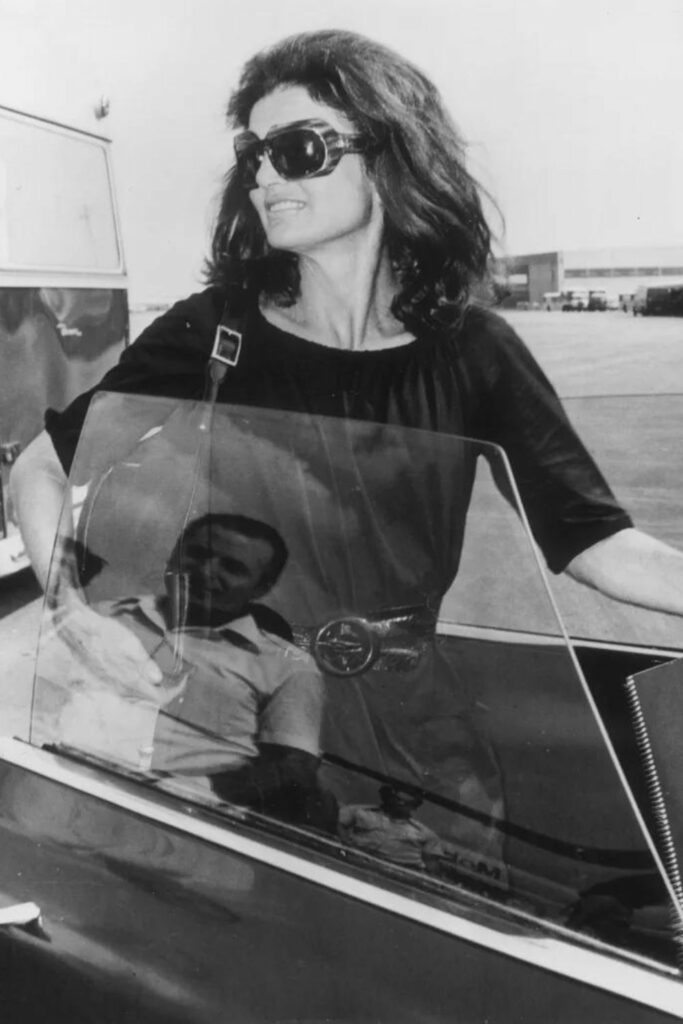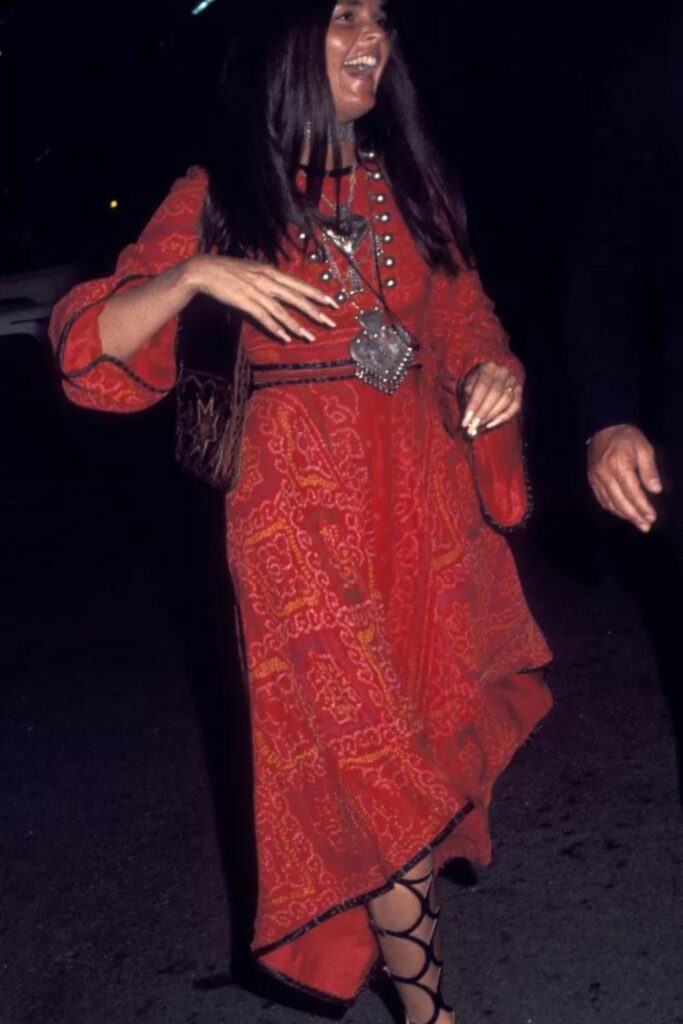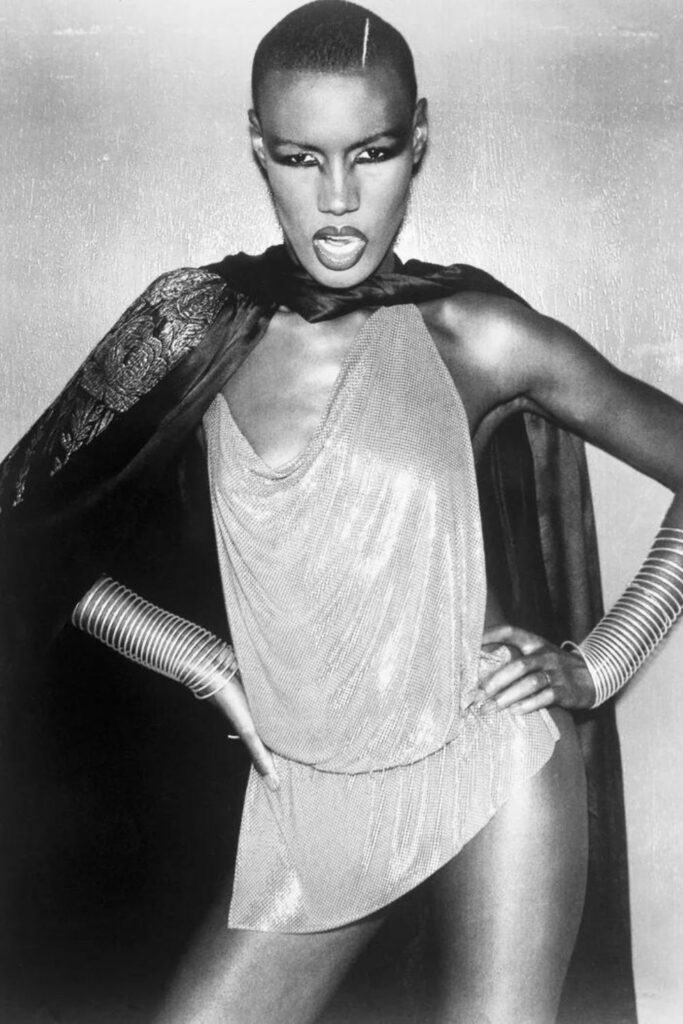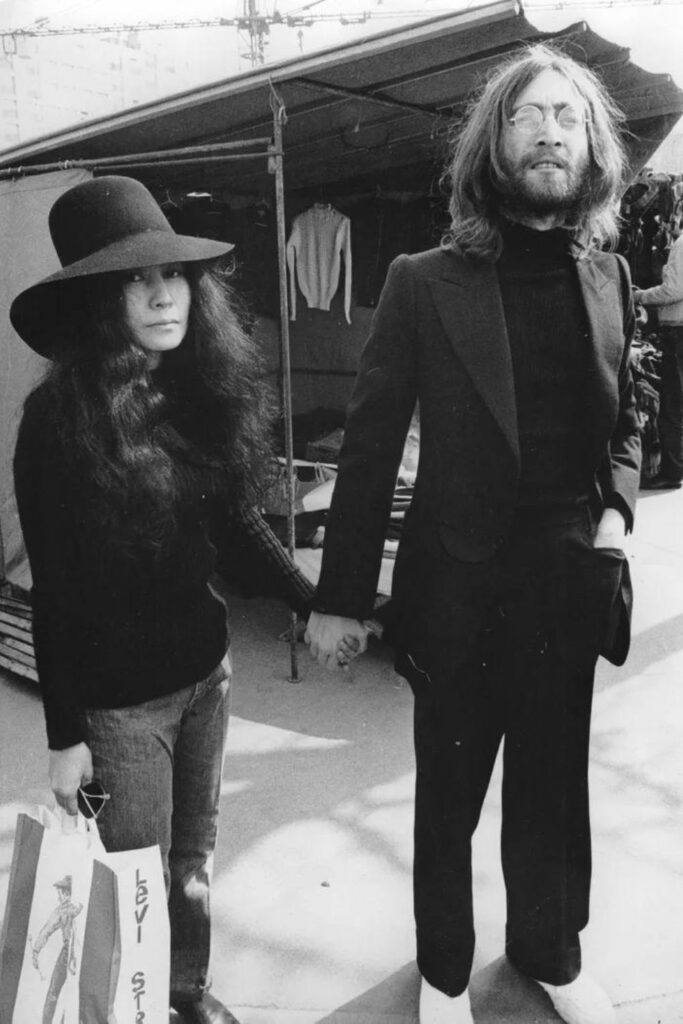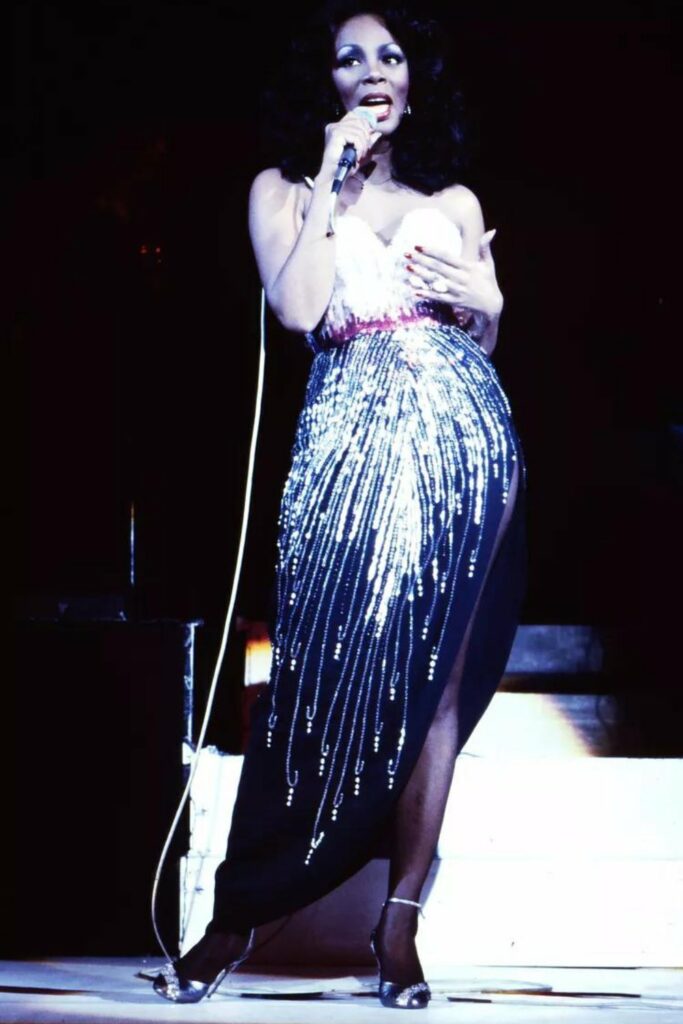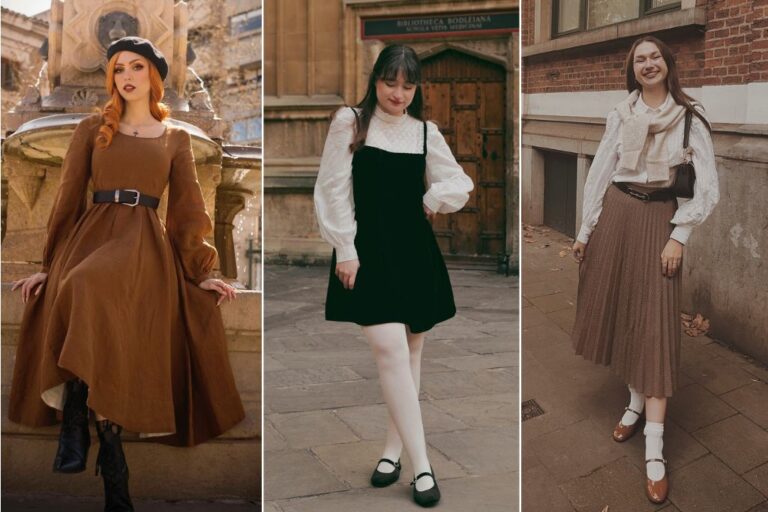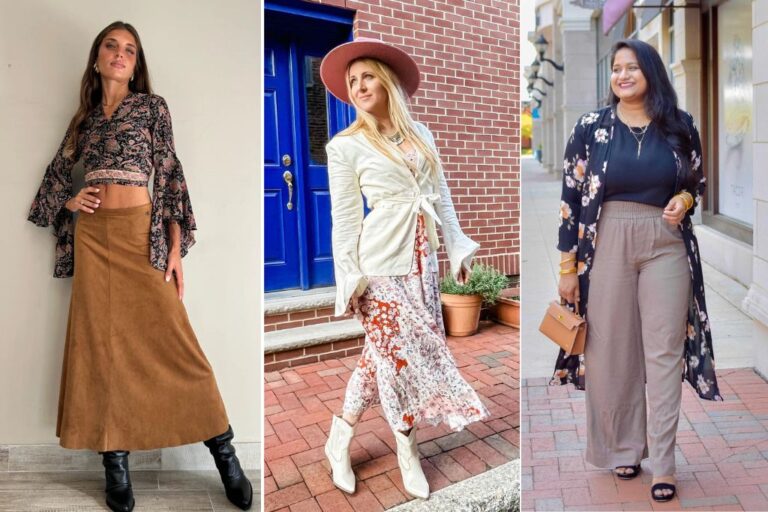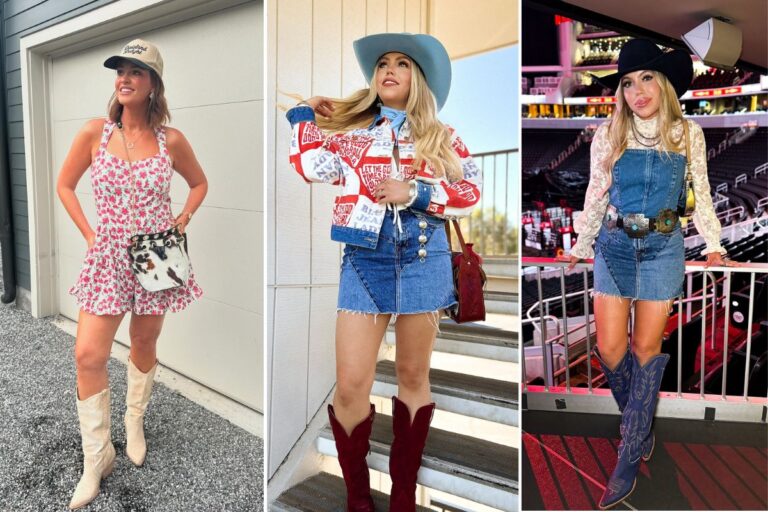The 1970s was a decade of bold fashion and unforgettable styles. From disco nights to boho days, ’70s fashion was all about self-expression and making a statement. Iconic pieces like flared jeans, wrap dresses, and aviator sunglasses are still popular today. They’ve proven they’re here to stay.
Whether you want to shine like a disco diva or embrace a laid-back boho vibe, these 18 classic ’70s trends have something for everyone. These styles are not only timeless but also versatile. You can easily mix them into your modern wardrobe. Get ready to be inspired by the best of ’70s fashion and see how you can rock these looks today.
Flared Jeans
Flared jeans were an enduring style from the 1970s that struck a balance between bell bottoms and bootcut silhouettes. Characterized by a widened, flared leg that tapers to fitted hips and thighs, flares were a flattering option for many body types during the decade.
The iconic Charlie’s Angels star, Farrah Fawcett, famously wore flared jeans during the height of her popularity in the 1970s. Her casual-chic style of pairing flares with casual tops and heels epitomized the effortless California style that dominated mainstream fashion of the era.
Flared silhouettes endure as a versatile style that flatters and elongates the leg. As a balance between extremes, flares encapsulate the spirit of 70s style as both relaxed and glamorous.
Daisy Dukes
Daisy Dukes refers to high-cut jean shorts popularized by Catherine Bach’s character on the 1979 show The Dukes of Hazzard. These very short shorts showed off Bach’s long, tanned legs and helped cement Daisy Duke as a sex symbol.
By the late 1970s, the Daisy Dukes style was widely copied by women and became a summertime staple. While very short, Daisy Dukes had a flattering high cut that elongated the legs. Women would often pair them with wedge heels or cowboy boots.
Rock stars like Debbie Harry of Blondie famously wore tiny cutoff shorts that exemplified the Daisy Dukes aesthetic. The style blended country and western styles with punk and rock sensibilities.
Gold Lamé
Metallic gold lamé fabric was ubiquitous on the disco dance floor and red carpets of the 1970s. Lamé is made from a blend of metallic fibers, like gold or silver, woven through synthetic fabrics to create a shiny, glittering texture.
Iconic singer Diana Ross famously wore a gold lamé halter dress during a 1970s TV concert special that was viewed by millions. The style perfectly embodied the glitz and glamor that Ross was known for.
Gold lamé eveningwear was a staple fabric choice for draped halters, wrap dresses, and flowing goddess gowns after dark. Designers often paired this flashy fabric with platform heels and oversized jewelry.
Batwing Sleeves
Dramatic batwing sleeves were a key style in 70s tops and dresses, thanks to trendsetters like Stevie Nicks of Fleetwood Mac. Batwing sleeves feature an exaggerated shape that billows out from fitted armholes to a loose, flowing cuff.
Oversized peasant blouses and capes with batwing sleeves epitomized the bohemian sensibilities that were widespread in the 1970s. Women would often pair voluminous batwing tops with fitted pencil skirts or flared jeans to balance proportions. This breezy sleeve style was ideal for dancing and flowing stage wear.
The Wrap Dress
The iconic wrap dress silhouette is credited to designer Diane von Furstenberg, who launched her namesake dress in 1974. This flattering and versatile style features a wrapped front with a self-tie belt to cinch the waist.
Wrap dresses were a workwear staple in the 1970s thanks to their effortless sophistication. Von Furstenberg’s signature chain print wrap dress epitomized the bold colors and carefree glamor of the decade. The wrap silhouette flatters all body types, making it an essential wardrobe piece for women in the workplace and beyond.
Aviator Sunglasses
Aviator sunglasses were originally created by Ray-Ban for fighter pilots in 1936 but became an eyewear icon in the 1970s. The teardrop shaped metal frames with dark lenses epitomized nonchalant cool and were worn by men and women alike throughout the decade.
Feminist icon and journalist, Gloria Steinem, rarely made a public appearance without her signature aviator sunglasses perched on her nose. Other stylish celebrities like Jackie O. helped popularize the versatility of aviators, which paired equally well with elegant ensembles and casual looks.
Crop Tops
Crop tops emerged as a daring new style in the 1970s, flaunting just a sliver of midriff. Black actress Pam Grier wore the look frequently in her popular Blaxploitation films like Foxy Brown and Coffy. Grier’s low-rise flares and cropped tops became a trademark style.
Pairing a crop top with flared jeans was a common look, allowing women to bare some skin in a stylish way. Oversized collars or lapels balanced the shrunken proportions. Gold hoops, chains, and stacked heels added to the aura of 70s glam.
Crochet
The handmade craft of crochet rose to high fashion prominence in the 1970s. Granny square afghans were reinterpreted as ponchos, floppy sun hats, fringed vests, minidresses and tiny halter tops.
Cher was frequently photographed wearing crochet caps, halters, and accessories during her rise to fame with then-husband Sonny Bono, helping popularize the crafty style.
Bohemian designers like Ossie Clark incorporated crochet accents and full crocheted looks into their collections. The texture and diaphanous effect of crochet perfectly captured the free-spirited era.
Le Smoking
In 1966, Yves Saint Laurent shocked the fashion world by unveiling Le Smoking – a womenswear version of a tuxedo featuring an androgynous silhouette with wide leg trousers, oversized lapels and bowtie. Throughout the 1970s, Le Smoking became a popular alternative for eveningwear and a pioneer of gender fluid fashion.
Model and socialite Bianca Jagger famously wore a custom white Le Smoking by YSL to her wedding to Mick Jagger in 1971. The iconic look featured flared white trousers and a double-breasted jacket with glamorous wide peak lapels. Jagger accessorized with a wide-brimmed hat and white roses.
Le Smoking paved the way for women to wear tailored pantsuits and exaggerated menswear details for a subversively glamorous look. The style remains an iconic innovation of 70s fashion.
Fringe Benefits
The movement and texture of fringe was a common decorative detail on 70s fashion. From bohemian ponchos to country-rock fringe jackets, designers incorporated dangling details on various garments and accessories.
Singer Cher famously wore fringe on many of her stage costumes, including her 1986 half-fishnet body stocking and later during her 1998 comeback tour. Jane Fonda donned fringe on the red carpet and helped make the look both fashionable and political during her activism in the early 1970s.
Fringe added a sense of motion and whimsy to everything from casual wear to performance costumes. Paired with suede, denim, leather and knits, fringe benefits elevated basics with free-spirited embellishment.
Pleasant Peasant
The pleasant peasant look centers around voluminous blouses and dresses featuring smocked bodices, balloon sleeves and ruffled necklines. This romantic silhouette drew inspiration from European folk styles and fit right in with the bohemian fashions of the 70s.
Women would often pair peasant blouses featuring drawstring necks and billowy sleeves with fitted pencil skirts or flared jeans to balance proportions. The look was commonly accessorized with wide leather belts worn at the natural waist. Flowy maxi skirts and dresses also complemented the peasant top shape.
The pleasant peasant look epitomized 70s boho style with its dreamy, romantic vibe. Young Hollywood starlets like Ali MacGraw helped popularize the carefree look that remains iconic today.
Jumpsuits
Jumpsuits ran the fashion gamut in the 1970s from utilitarian boilersuits to slinky halter neck disco looks. The one-piece wonder was a staple for the modern woman on the move.
For daywear, jumpsuits often featured shirt style collars, tie belt waists, cargo pockets and stylish hats. Neutral colors and fabrics made them suitable business casual attire.
After dark, jumpsuits took on a whole new personality. Slinky fabrics like silk, satin and metallics were cut low with halters and deep necklines. Shoulder pads, bell bottoms and platform sandals complemented the silhouette. Jumpsuits allowed women to tear up the dance floor while staying comfortable and stylish.
Corduroy
The ribbed texture of corduroy fabric was beloved for its durability and versatility in the 1970s. From head to toe, corduroy was made into trousers, skirts, jackets, caps and more. Its popular hues like brown, cream and green suited the earthy palette en vogue.
Women would often coordinate corduroy tops and bottoms for a retro vibe. Flared corduroy pants were particularly popular paired with delicate blouses or rustic turtlenecks. The fabric was also an option for menswear-inspired jackets and vests, which women would wear over floral dresses or peasant blouses.
Corduroy’s associations with country style and academia helped it stand the test of time as a vintage-inspired fabric still beloved today.
Jackie O. Sunglasses
Oversized round sunglasses became iconic in the 1960s thanks to former First Lady and style icon, Jackie Kennedy Onassis. The glamorous shades not only framed Jackie O’s face but helped conceal her identity, allowing her to maintain privacy while looking fabulous.
Throughout the 1970s, Jackie O. continued to influence trends with her huge sunglasses, elegant silk scarves and understated handbags. She looked effortlessly chic while keeping paparazzi at bay, making her accessories wardrobe both fashionable and practical.
Big round shades remain in vogue today thanks in part to Jackie O’s signature wayfarer style. The eyewear epitomized incognito celebrity glamor that defined the 70s.
Boho Beauty
The bohemian or “boho” trend centered around a romantic style embracing prints, patterns and textural details like lace, fringe and macramé. Flowy silhouettes, peasant blouses and prairie dresses epitomized the laidback 70s hippie chic.
Young Hollywood starlet Ali MacGraw popularized the dreamy boho aesthetic in era-defining films like Love Story and Goodbye Columbus. She paired printed chiffon dresses and crochet tops with accessories like lace-up gladiator sandals, silver cuff bracelets and long pendants.
The boho beauty look made use of loose, textured hairstyles and natural makeup to complete the whimsical vibe. Elements of this effortless style continue inspiring modern interpretations today.
The Provocateur
While many 70s styles had a romantic or retro feel, the decade also harbored an emerging futuristic, avant garde aesthetic that pushed boundaries. Singer and style chameleon Grace Jones embodied this provocative vision through high fashion and burlesque performance ensembles.
Jones would pair lingerie-inspired pieces like corsets, fishnets and bra tops with luxe embellishments like feathers, chainmail and leather. Dramatic winged eyeliner and body paint complemented her otherworldly persona.
The provocateur archetype paved the way for punk, new wave and gender fluid expressions that followed in subsequent decades. The fusion of glam theatricality with raw, futuristic edge was revolutionary and remains impactful today.
Hats
Hats of all varieties, besides baseball caps, were essential accessories in the 1970s. Berets, newsboy caps, wide-brimmed hats and bucket hats added interest to simple outfits like jeans and turtlenecks.
Big, floppy sun hats were also popular and iconic images of celebrities trying to avoid the paparazzi. Jackie O., Elizabeth Taylor and Stevie Nicks were rarely spotted out sans huge hat paired with equally oversized sunglasses.
Pageboy caps also had a moment with women pairing the newsboy style with casual pieces like band t-shirts and cutoffs. Pork pie hats went hand-in-hand with the 1950s nostalgia prevalent in the era. Hats capped off both dressed up and casual 70s style.
Disco Diva
The rise of disco music brought a sense of glamour and sensuality to mainstream nightlife. Women would don slinky dresses, platform heels and bold makeup to hit the dancefloor at legendary clubs like Studio 54.
No one embodied the disco diva aesthetic more than Donna Summer, who rose to fame as the queen of disco with hits like “Love to Love You Baby” and “Bad Girls.” Onstage and on the red carpet, Summer glowed in glittering gowns, jumpsuits and liquid lamé.
The disco diva look centered around shine, shimmer and showing some skin. Metallic fabrics, plunging necklines, sequins and sky-high heels encapsulated the style’s decadent appeal that still inspires looks today.
